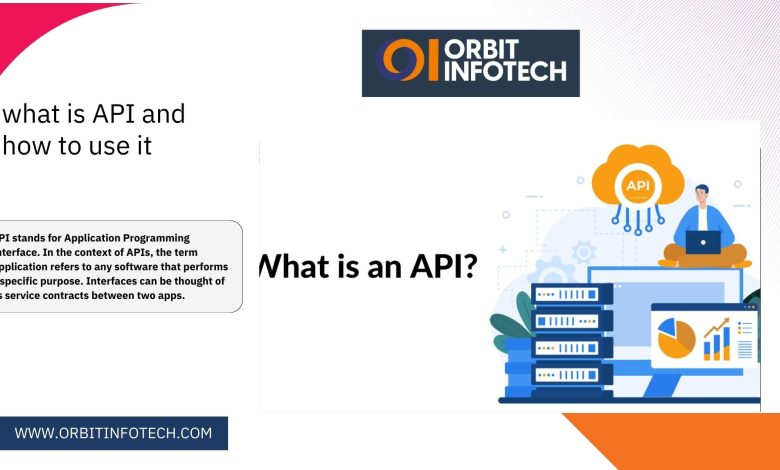What is an API (Application Programming Interface)?

What is an API?

What is API and how to use API? APIs are techniques that enable two software components to communicate with each other using a set of definitions and protocols. For example, the weather bureau’s software system maintains daily weather information. The weather app on your phone “talks” to this system using APIs (Application Programming Interface) and displays daily weather updates on your device.
What does API stand for?
API stands for Application Programming Interface. In the context of APIs (Application Programming Interface), the term “application” refers to any software that serves a specified purpose. Interfaces can be viewed as service contracts between two applications. This contract outlines how the two will communicate with one another via requests and responses. Their API (Application Programming Interface) documentation provides recommendations on how developers should structure their calls and responses.
How does an API work?

API architecture is often defined in terms of client and server. The program that initiates the request is known as the client, and the application that responds is known as the server. In the weather example, the server is the bureau’s weather database, and the client is a mobile app.
Also Read:- What is Google Search Console and how to use
APIs can operate in four distinct ways, depending on when and why they were built.
SOAP APIs
These APIs (Application Programming Interface) employ the Simple Object Access Protocol. The client and server communicate using XML. This is a less flexible API that was once popular.
RPC APIs
These APIs (Application Programming Interface) are referred to as remote procedure calls. The client performs a function (or procedure) on the server and The server returns the output to the client.
WebSocket APIs
Another popular online API (Application Programming Interface) development is the Websocket API, which delivers data via JSON objects. A WebSocket API allows for two-way communication between client applications and servers. The server can send callback messages to connected clients, making it more efficient than the REST API.
RESTful APIs
These are the most widely used and flexible APIs (Application Programming Interface) available on the internet today. The client sends requests to the server as data. The server utilizes the client’s input to start internal processes and returns output data to the client. Let’s go over REST APIs in greater detail below.
What are RESTful APIs?
The acronym REST stands for Representational State Transfer. REST specifies a set of functions such as GET, PUT, and DELETE that clients can utilize to retrieve server data. HTTP facilitates the exchange of data between clients and servers.
The primary feature of the REST API is statelessness. Statelessness implies that servers do not save client data between requests. Client queries to the server are comparable to the URLs you enter into your browser to access a website. The server’s response is bare data, without the graphical depiction of a web page.
What is a web API?
A Web API, often known as a Web Service API, is a web server-to-browser application processing interface. Although all web services are APIs, not all APIs are web services. REST API is a subset of Web API that follows the standard architectural style described above.
APIs are known by various designations, such as Java APIs and service APIs, because they were built prior to the internet. Modern web APIs are REST APIs, and the words are interchangeable.
What are API integrations?
API integrations are software components that sync data between clients and servers. Examples of API (Application Programming Interface) integrations include automatic data transfer to the cloud from your phone’s image gallery, When you go to another time zone, your laptop’s time and date will automatically sync. Enterprises can also employ them to efficiently automate a wide range of system functions.
Click This:- Top Atlanta Web design services
What are the Benefits of RESTful APIs (Application Programming Interface)?
REST APIs provide four primary benefits:
1. Integration
APIs are used to incorporate new apps into existing software systems. This accelerates development because each functionality does not need to be created from scratch. APIs enable you to make use of existing code.
2. Innovation
A revolutionary software has the potential to transform entire industries. Businesses must adapt rapidly and enable the rapid deployment of innovative services. They can accomplish this by making API-level changes rather than completely rewriting the code.
3. Expansion
APIs offer organizations a unique opportunity to address their clients’ needs across several platforms. For example, the maps API enables the integration of map information into websites, Android, iOS, and so on. Any business can provide similar access to its internal databases via free or paid APIs.
4. Easy to maintain
The API serves as a gateway between two systems. Each system is required to make internal adjustments to ensure that the API is not harmed. This ensures that any future code modifications made by one party have no influence on the other.
What are the many sorts of APIs?
APIs are classed based on their architecture and scope of use. We’ve already looked at the primary sorts of API architectures So, let’s look at the spectrum of use.
Private APIs
These are internal to an organization and are only used to connect systems and data within it.
Public APIs
These are accessible to the public and can be utilized by anyone. These APIs may or may not require authorization and have a cost.
Partner APIs
These are only available to authorized external developers to facilitate business-to-business partnerships.
Composite APIs
These integrate two or more APIs (Application Programming Interface) to address complex system requirements or behaviors.
What is an API endpoint, and why does it matter?
API endpoints are the API communication system’s final touchpoints. These include server URLs, services, and other distinct digital locations from which data is transferred and received between systems. API endpoints are important to organizations for two reasons:
1. Security.
API endpoints leave the system exposed to attacks. API monitoring is critical to preventing misuse.
2. Performance.
API endpoints, particularly high-traffic ones, can cause bottlenecks and degrade system performance.
How do I secure a REST API?
All APIs must be secured with adequate authentication and monitoring. The two primary methods for securing REST APIs are:
1. Authentication Tokens
These are used to authorize users to make API requests. Authentication tokens ensure that users are who they claim to be and have the necessary permissions for that API (Application Programming Interface) call. For example, when you log onto your email server, your email client uses authentication tokens to provide secure access.
2. API Keys
API keys verify the program or application making the API request. They identify the program and ensure it has the necessary access rights to make the API call. API keys are less secure than tokens, however they do allow API monitoring in order to collect usage data. You may have seen a long string of characters and digits in your browser URL when visiting various websites. This string represents an API (Application Programming Interface) key that the website uses to make internal API calls.
How can I develop an API?
Due attention and effort are required to create an API (Application Programming Interface) that other developers will want to use and trust. Here are the five steps needed for high-quality API design:
1. Plan the API.
API specifications, such as OpenAPI, serve as the template for API design. It is preferable to consider various use cases in advance and ensure that the API (Application Programming Interface) corresponds to current API development standards.
2. Build the API
API designers create prototypes using boilerplate code. Once the prototype has been tested, Developers can tailor it to meet internal requirements.
3. Test the API
API testing, like software testing, is necessary to avoid errors and faults. API testing tools can be used to ensure that the API is robust against cyber assaults.
4. Document the API
While APIs are self-explanatory, API documentation serves as a guide for better use. In a service-oriented architecture, well-documented APIs with a wide range of functions and use cases are more popular.
5. Market the API
API marketplaces, like Amazon’s online retail marketplace, allow developers to buy and sell other APIs. Listing your API can help you monetize it.
What is API testing?
API testing strategies are comparable to other software testing methods. The primary focus is on validating server answers. API testing involves:
Also Read:- Top Content Marketing Strategies in 2024
Performance testing involves making numerous calls to API endpoints.
Writing unit tests to ensure business logic and functional correctness.
Security testing is carried out by simulating system attacks.
How do I write API documentation?
The API management approach includes creating detailed API (Application Programming Interface) documentation. API documentation can be created automatically or written manually. Some of the recommended practices are:
Writing explanations in plain, understandable English. Documents generated by tools might become lengthy and require revision.
Use code samples to demonstrate functionality.
Keeping the paperwork correct and up to date.
Writing in a beginner-friendly approach and addressing any API-related issues for users.
How do I utilize an API?
Steps for implementing a new API include:
Obtaining the API key. This is accomplished by establishing a verified account with the API provider.
Create an HTTP API client. This utility makes it simple to format API requests based on the API keys you receive.
If you do not have an API client, you can try to structure the request in your browser using the API documentation.
What is an API Gateway?
An API Gateway is an API administration tool for enterprise clients who employ a variety of back-end services. API (Application Programming Interface) gateways often perform basic duties such as user authentication, statistics, and rate management, which apply to all API calls.
Amazon API Gateway is a fully managed service that enables developers to easily construct, publish, maintain, monitor, and protect APIs (Application Programming Interface) of any scale. It manages all of the activities associated with accepting and processing thousands of concurrent API calls, such as traffic management, CORS support, authorization and access control, throttling, monitoring, and API version management.
What is GraphQL?
GraphQL is a query language designed exclusively for APIs (Application Programming Interface). It prioritizes providing clients with only the info they seek. It aims to make APIs faster, more flexible, and developer-friendly. As an alternative to REST, GraphQL enables front-end developers to query different databases, microservices, and APIs via a single GraphQL endpoint. Organizations opt to build APIs with GraphQL because it allows them to construct applications faster. Discover more about GraphQL here.
AWS AppSync is a fully managed service that makes it easy to construct GraphQL APIs (Application Programming Interface) by taking over the heavy work of securely connecting to data sources like AWS DynamoDB, AWS Lambda, and more. AWS AppSync can transmit real-time data updates to millions of customers via Websockets. AppSync also allows mobile and web applications to access local data when the devices are offline. Once implemented, AWS AppSync automatically scales the GraphQL API execution engine up and down to meet API request levels.




